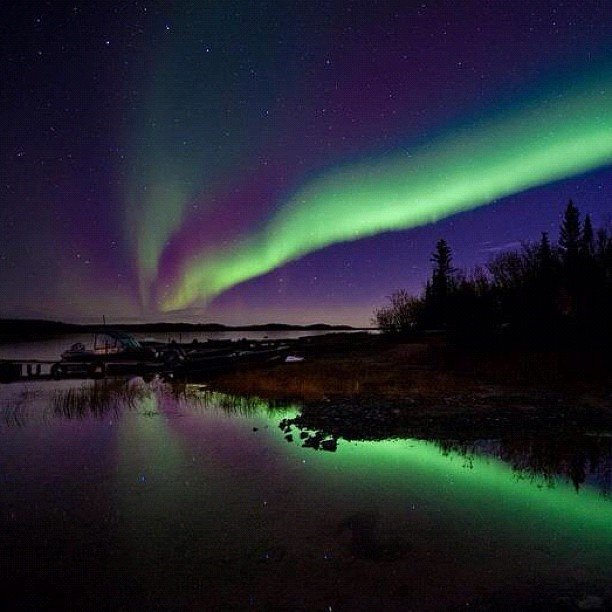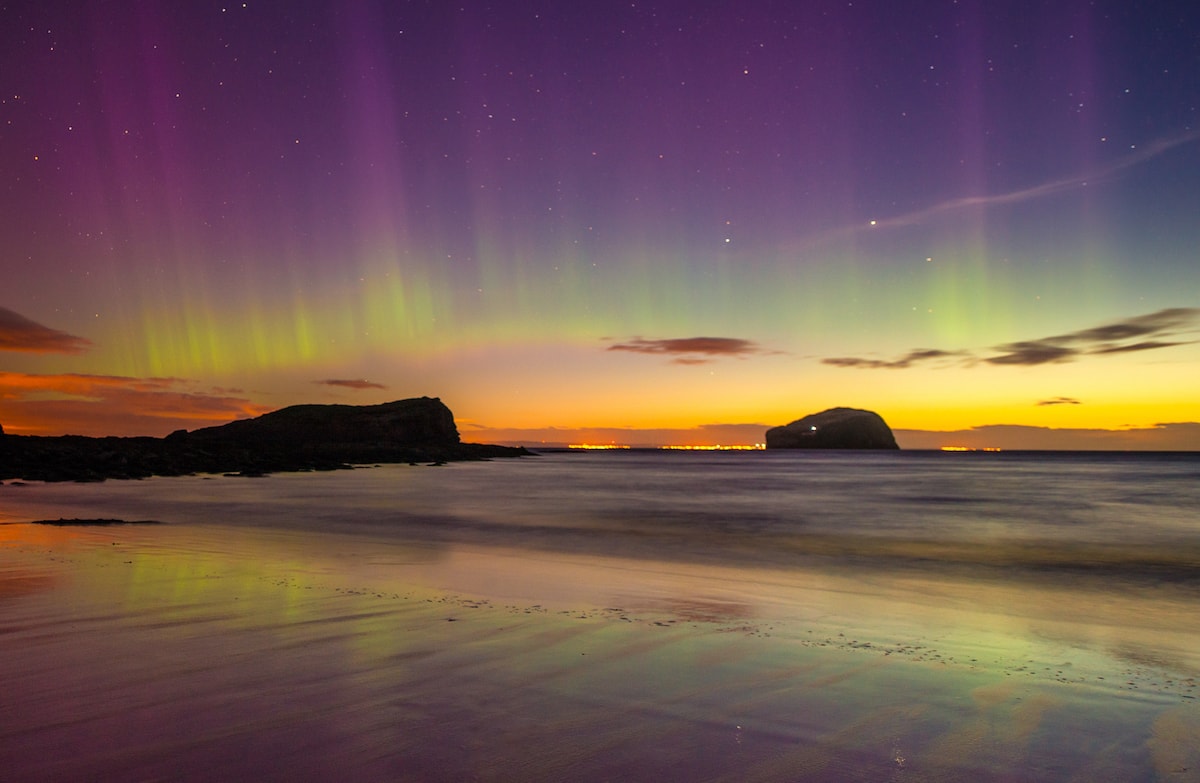Have you ever wondered what it's like to witness the mesmerizing dance of the northern lights in Ohio? If you're dreaming of chasing the aurora borealis, you're in for an unforgettable adventure. The northern lights, also known as aurora borealis, are one of nature's most spectacular light shows. Ohio might not be the first place that comes to mind when thinking about this phenomenon, but with the right conditions, it can happen here too.
Imagine standing under a starry sky, gazing at vibrant green and purple ribbons swirling above you. While Ohio isn't exactly a hotspot for auroras, it does offer opportunities to catch a glimpse if you know where and when to look. So, buckle up and get ready to dive into the world of northern lights in Ohio!
Before we jump into the nitty-gritty details, let's set the stage. The northern lights occur when charged particles from the sun collide with Earth's atmosphere, creating a stunning light display. While places like Alaska and Norway are famous for their auroras, Ohio can occasionally experience this natural wonder. Keep reading to find out how and when to make the most of your northern lights adventure!
Read also:Alex Roe Wife Olivia Cooke The Real Story Behind The Power Couple
Understanding the Northern Lights in Ohio
What Causes the Northern Lights?
So, what exactly causes the northern lights? Picture this: the sun releases charged particles during solar storms, and when these particles interact with Earth's magnetic field, they create a dazzling light show. It's like a cosmic dance between the sun and our planet. The colors you see—green, purple, pink, and even red—are determined by the type of gas particles colliding and the altitude of the interaction.
In Ohio, the chances of seeing the northern lights depend heavily on solar activity and geomagnetic storms. When the sun is particularly active, the auroral oval (the area where auroras are most likely to occur) can expand southward, giving Ohioans a chance to witness the magic.
Best Time of Year for Aurora Viewing
Timing is everything when it comes to northern lights in Ohio. The best time to see auroras in this region is during the winter months, specifically from December to February. Why? Well, winter nights are longer, providing more hours of darkness for optimal viewing. Plus, the air tends to be clearer, reducing light pollution and allowing for better visibility.
That said, auroras can occur at any time of year, but the chances are higher during the colder months. Keep an eye on space weather forecasts to stay updated on geomagnetic activity and increase your chances of spotting the lights.
How to Prepare for Your Northern Lights Hunt
Choosing the Right Location
One of the most crucial factors in seeing the northern lights is finding a dark location away from city lights. Ohio has several spots that are perfect for stargazing and aurora hunting. Head to state parks like Hocking Hills or Maumee Bay State Park, where the skies are relatively free from light pollution. These areas offer a serene environment for capturing the beauty of the auroras.
Pro tip: Bring a flashlight with a red filter to preserve your night vision while navigating in the dark. Trust me, it makes a huge difference!
Read also:Hailey Sigmond The Rising Star Whos Taking The World By Storm
Checking Space Weather Forecasts
To maximize your chances of spotting the northern lights, you'll need to keep an eye on space weather forecasts. Websites like SpaceWeather.com and the NOAA Space Weather Prediction Center provide real-time updates on solar activity and geomagnetic storms. Look for KP index values of 6 or higher, which indicate strong auroral activity.
Sign up for alerts so you're notified the moment conditions become favorable. This way, you won't miss a single opportunity to chase the lights!
Tips for Capturing the Northern Lights
Photography Gear You'll Need
If you're planning to photograph the northern lights, having the right gear is essential. Here's a quick list of what you'll need:
- A DSLR or mirrorless camera with manual settings
- A wide-angle lens (preferably f/2.8 or faster)
- A sturdy tripod
- A spare battery (cold weather can drain your battery quickly)
- A remote shutter release or timer to avoid camera shake
Remember, the key to capturing stunning aurora photos is patience and experimentation. Don't be afraid to adjust your settings until you find the perfect combination.
Camera Settings for Aurora Photography
Here's a basic guide to setting up your camera for northern lights photography:
- Shutter speed: Start with 10-15 seconds and adjust as needed
- Aperture: Set to the widest setting (e.g., f/2.8)
- ISO: Begin with ISO 800-1600 and increase if necessary
- Focus: Switch to manual focus and set it to infinity
Feel free to tweak these settings based on the brightness of the auroras and your personal preferences. Practice makes perfect, so don't hesitate to experiment!
Common Misconceptions About Northern Lights in Ohio
Myth: You Can See the Northern Lights Anywhere in Ohio
While it's true that the northern lights can occasionally be seen in Ohio, your chances improve significantly if you're in a darker, more rural area. Light pollution from cities like Columbus and Cleveland can make it difficult to spot auroras, even during strong geomagnetic storms. That's why heading to state parks or other remote locations is crucial.
Myth: The Northern Lights Always Appear in Winter
Although winter is the prime season for aurora viewing in Ohio, it's not the only time they can occur. Solar storms can happen year-round, and if the conditions are right, you might catch a glimpse of the lights during other seasons. However, the longer nights and clearer skies of winter make it the most favorable time for aurora hunting.
Why Ohio is Worth the Effort
The Beauty of Seeing Northern Lights Close to Home
While places like Alaska and Iceland are renowned for their auroras, there's something special about witnessing this natural phenomenon close to home. Ohio offers a unique opportunity to experience the northern lights without the need for expensive travel or complicated logistics. Plus, there's a certain thrill in knowing you've spotted something so rare and beautiful in your own backyard.
Whether you're a seasoned aurora hunter or a first-timer, chasing the northern lights in Ohio is an adventure worth pursuing. Just imagine the sense of accomplishment you'll feel when you finally see those vibrant colors dancing across the sky!
Scientific Insights on Northern Lights
Understanding Solar Activity and Its Impact
Solar activity plays a critical role in determining when and where auroras occur. During periods of high solar activity, the chances of seeing the northern lights in Ohio increase significantly. Scientists monitor sunspots, solar flares, and coronal mass ejections (CMEs) to predict geomagnetic storms that could lead to auroral displays.
While we can't control the sun's behavior, we can use scientific tools and forecasts to prepare for potential aurora sightings. By staying informed and adaptable, you'll be better equipped to make the most of your northern lights adventure.
Final Thoughts and Call to Action
In conclusion, while Ohio might not be the first destination that comes to mind for northern lights enthusiasts, it offers a unique opportunity to witness this natural wonder. By choosing the right time, location, and preparation, you can increase your chances of experiencing the magic of the auroras in your own state.
So, what are you waiting for? Grab your camera, pack your gear, and head out on an unforgettable northern lights adventure. Don't forget to share your experiences and photos with fellow aurora hunters. The more we talk about this incredible phenomenon, the more people will be inspired to join the chase!
Table of Contents
- Understanding the Northern Lights in Ohio
- What Causes the Northern Lights?
- Best Time of Year for Aurora Viewing
- How to Prepare for Your Northern Lights Hunt
- Choosing the Right Location
- Checking Space Weather Forecasts
- Tips for Capturing the Northern Lights
- Photography Gear You'll Need
- Camera Settings for Aurora Photography
- Common Misconceptions About Northern Lights in Ohio
- Why Ohio is Worth the Effort
- Scientific Insights on Northern Lights
- Final Thoughts and Call to Action


